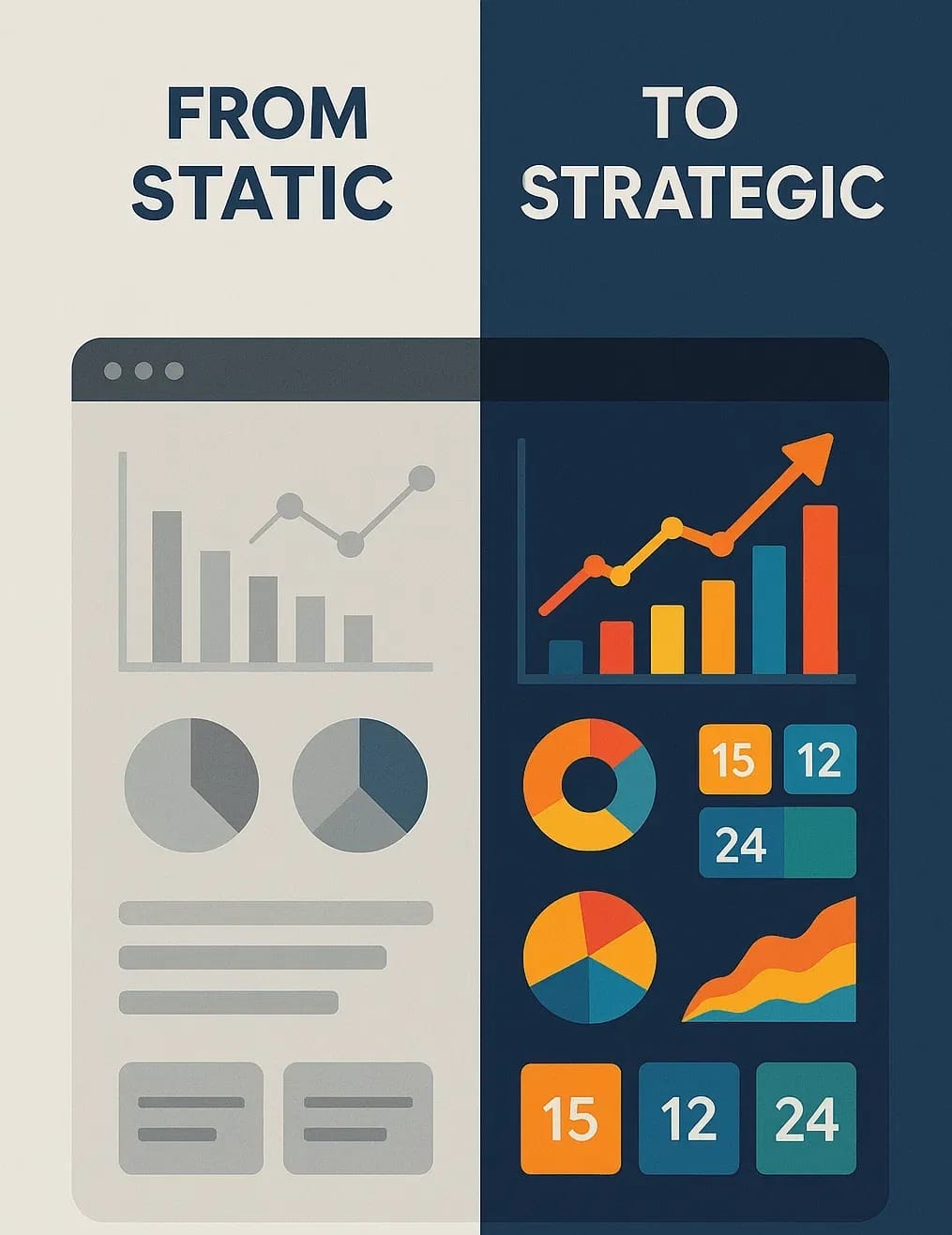How Payers Can Turn Claims Dashboards into Real-Time Decisions

Transforming Data into Actionable Insights
Claims dashboards are everywhere—but are they driving real change?
For many payers, dashboards are stuck in passive mode: tracking indicators without guiding strategic action. The value of healthcare data doesn’t come from what you can see—it comes from what you can do with it.
From Static to Dynamic
Standard dashboards offer a rearview look at:
- Utilization trends
- Risk score patterns
- Cost spikes
- Readmission rates
While useful, these snapshots aren’t enough to guide proactive decisions.
Case in Point: A Medicare Advantage Plan in Trouble
A regional MA plan faced:
- Rising readmissions
- Low ROI on care management
- An aging, unmanaged population
They didn’t need more visibility—they needed velocity. The turning point? Evolving from static dashboards to dynamic decision engines.
Four Phases: Turning Insight into Action
1. Dashboard Design with Embedded Logic
Before:
- Raw metrics stratified by demographics, zip code, and SDoH
- Basic cost/utilization charts
After:
- Interactive claims logic with filters for care gaps, diagnosis clusters, and modifiable risk variables
2. Interactive Modeling
Enable “what-if” scenarios:
- What if we increase HRA completion by 20%?
- How does a telehealth expansion reduce ED visits?
- What’s the ROI of targeting SDoH barriers in high-risk zip codes?
Real-World Outputs:
- Reduced readmission forecasts
- Risk score shifts from medication adherence
- Forecasted savings from targeted interventions
3. Predictive Alerts
Trigger real-time signals based on emerging patterns:
- Top-decile cost escalators
- Spikes in ED visits for chronic disease cohorts
- Unusual shifts in risk coding patterns
Outcome: No more lag time between insight and intervention.
4. Operational Launchpad
Dashboards must feed operations:
- Auto-generated care manager outreach lists
- Prioritized at-risk member tracking
- Real-time guidance for ACO or VBC strategy teams
This is how dashboards become decision-making engines—not just reports.
The True Cost of Inaction
Without real-time capabilities, health plans are left reacting too late.
They miss opportunities to:
- Prevent avoidable hospitalizations
- Align staffing and outreach to emerging risk
- Capture value in shared savings models
A static dashboard—even well-designed—is still leaving value on the table.
Call to Action
Payer leaders: Don’t let your data stop at the dashboard.
Let’s build more than reports—
Let’s build momentum.
Vireon Health Economics: Turning payer data into payer strategy.
Connect with us to explore how your dashboards can drive better decisions—faster.
